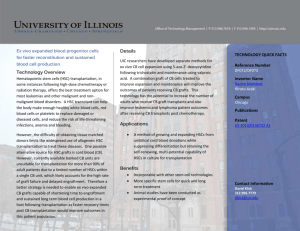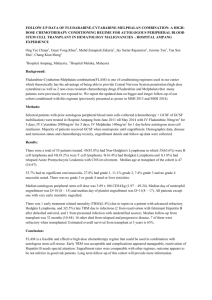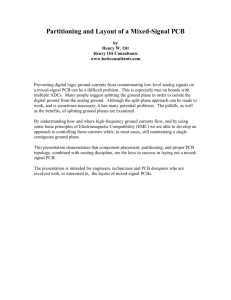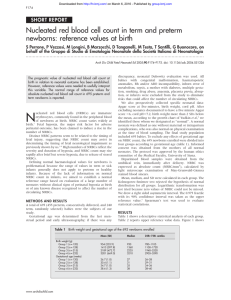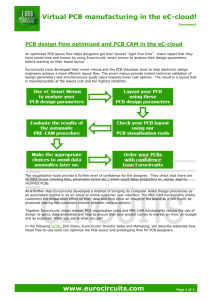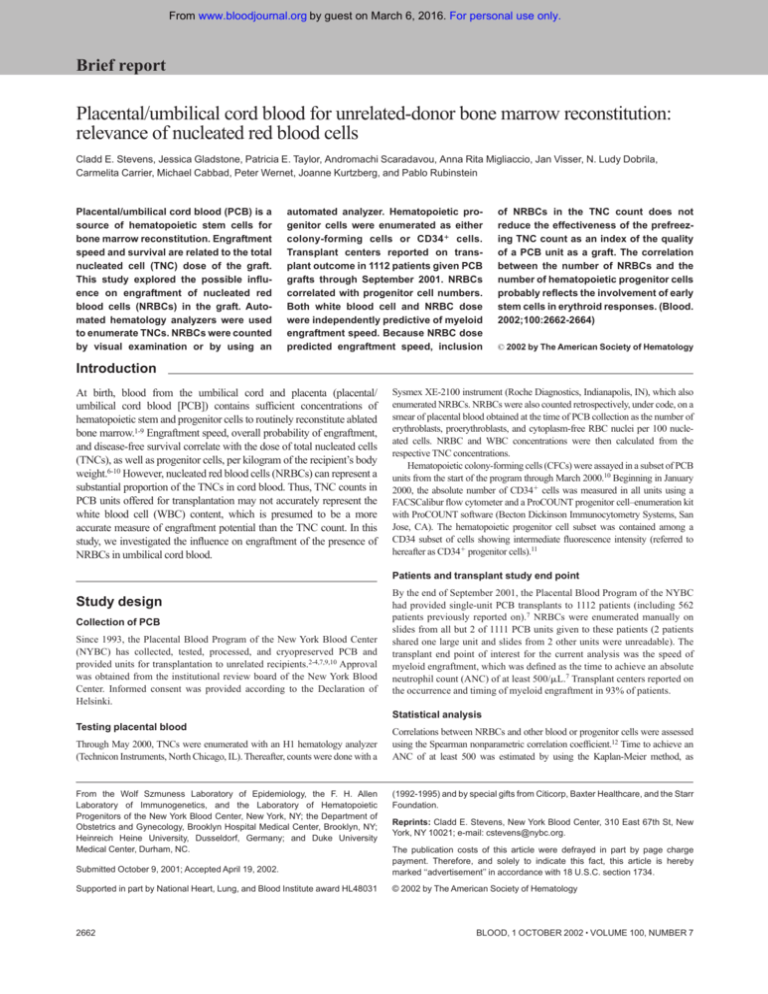
From www.bloodjournal.org by guest on March 6, 2016. For personal use only.
Brief report
Placental/umbilical cord blood for unrelated-donor bone marrow reconstitution:
relevance of nucleated red blood cells
Cladd E. Stevens, Jessica Gladstone, Patricia E. Taylor, Andromachi Scaradavou, Anna Rita Migliaccio, Jan Visser, N. Ludy Dobrila,
Carmelita Carrier, Michael Cabbad, Peter Wernet, Joanne Kurtzberg, and Pablo Rubinstein
Placental/umbilical cord blood (PCB) is a
source of hematopoietic stem cells for
bone marrow reconstitution. Engraftment
speed and survival are related to the total
nucleated cell (TNC) dose of the graft.
This study explored the possible influence on engraftment of nucleated red
blood cells (NRBCs) in the graft. Automated hematology analyzers were used
to enumerate TNCs. NRBCs were counted
by visual examination or by using an
automated analyzer. Hematopoietic progenitor cells were enumerated as either
colony-forming cells or CD34ⴙ cells.
Transplant centers reported on transplant outcome in 1112 patients given PCB
grafts through September 2001. NRBCs
correlated with progenitor cell numbers.
Both white blood cell and NRBC dose
were independently predictive of myeloid
engraftment speed. Because NRBC dose
predicted engraftment speed, inclusion
of NRBCs in the TNC count does not
reduce the effectiveness of the prefreezing TNC count as an index of the quality
of a PCB unit as a graft. The correlation
between the number of NRBCs and the
number of hematopoietic progenitor cells
probably reflects the involvement of early
stem cells in erythroid responses. (Blood.
2002;100:2662-2664)
© 2002 by The American Society of Hematology
Introduction
At birth, blood from the umbilical cord and placenta (placental/
umbilical cord blood [PCB]) contains sufficient concentrations of
hematopoietic stem and progenitor cells to routinely reconstitute ablated
bone marrow.1-9 Engraftment speed, overall probability of engraftment,
and disease-free survival correlate with the dose of total nucleated cells
(TNCs), as well as progenitor cells, per kilogram of the recipient’s body
weight.6-10 However, nucleated red blood cells (NRBCs) can represent a
substantial proportion of the TNCs in cord blood. Thus, TNC counts in
PCB units offered for transplantation may not accurately represent the
white blood cell (WBC) content, which is presumed to be a more
accurate measure of engraftment potential than the TNC count. In this
study, we investigated the influence on engraftment of the presence of
NRBCs in umbilical cord blood.
Sysmex XE-2100 instrument (Roche Diagnostics, Indianapolis, IN), which also
enumerated NRBCs. NRBCs were also counted retrospectively, under code, on a
smear of placental blood obtained at the time of PCB collection as the number of
erythroblasts, proerythroblasts, and cytoplasm-free RBC nuclei per 100 nucleated cells. NRBC and WBC concentrations were then calculated from the
respective TNC concentrations.
Hematopoietic colony-forming cells (CFCs) were assayed in a subset of PCB
units from the start of the program through March 2000.10 Beginning in January
2000, the absolute number of CD34⫹ cells was measured in all units using a
FACSCalibur flow cytometer and a ProCOUNT progenitor cell–enumeration kit
with ProCOUNT software (Becton Dickinson Immunocytometry Systems, San
Jose, CA). The hematopoietic progenitor cell subset was contained among a
CD34 subset of cells showing intermediate fluorescence intensity (referred to
hereafter as CD34⫹ progenitor cells).11
Patients and transplant study end point
Study design
Collection of PCB
Since 1993, the Placental Blood Program of the New York Blood Center
(NYBC) has collected, tested, processed, and cryopreserved PCB and
provided units for transplantation to unrelated recipients.2-4,7,9,10 Approval
was obtained from the institutional review board of the New York Blood
Center. Informed consent was provided according to the Declaration of
Helsinki.
By the end of September 2001, the Placental Blood Program of the NYBC
had provided single-unit PCB transplants to 1112 patients (including 562
patients previously reported on).7 NRBCs were enumerated manually on
slides from all but 2 of 1111 PCB units given to these patients (2 patients
shared one large unit and slides from 2 other units were unreadable). The
transplant end point of interest for the current analysis was the speed of
myeloid engraftment, which was defined as the time to achieve an absolute
neutrophil count (ANC) of at least 500/L.7 Transplant centers reported on
the occurrence and timing of myeloid engraftment in 93% of patients.
Statistical analysis
Testing placental blood
Through May 2000, TNCs were enumerated with an H1 hematology analyzer
(Technicon Instruments, North Chicago, IL). Thereafter, counts were done with a
From the Wolf Szmuness Laboratory of Epidemiology, the F. H. Allen
Laboratory of Immunogenetics, and the Laboratory of Hematopoietic
Progenitors of the New York Blood Center, New York, NY; the Department of
Obstetrics and Gynecology, Brooklyn Hospital Medical Center, Brooklyn, NY;
Heinreich Heine University, Dusseldorf, Germany; and Duke University
Medical Center, Durham, NC.
Correlations between NRBCs and other blood or progenitor cells were assessed
using the Spearman nonparametric correlation coefficient.12 Time to achieve an
ANC of at least 500 was estimated by using the Kaplan-Meier method, as
(1992-1995) and by special gifts from Citicorp, Baxter Healthcare, and the Starr
Foundation.
Reprints: Cladd E. Stevens, New York Blood Center, 310 East 67th St, New
York, NY 10021; e-mail: cstevens@nybc.org.
Submitted October 9, 2001; Accepted April 19, 2002.
The publication costs of this article were defrayed in part by page charge
payment. Therefore, and solely to indicate this fact, this article is hereby
marked ‘‘advertisement’’ in accordance with 18 U.S.C. section 1734.
Supported in part by National Heart, Lung, and Blood Institute award HL48031
© 2002 by The American Society of Hematology
2662
BLOOD, 1 OCTOBER 2002 䡠 VOLUME 100, NUMBER 7
From www.bloodjournal.org by guest on March 6, 2016. For personal use only.
BLOOD, 1 OCTOBER 2002 䡠 VOLUME 100, NUMBER 7
NUCLEATED RED CELLS IN CORD-BLOOD TRANSPLANTS
2663
previously reported.7,10,13 In assessing the significance of associations between
cell dose and time to engraftment, we used the log-rank statistic with multivariate
analyses carried out by using Cox logistic regression under an assumption of
proportional hazards (all analyzed variables included in the model).14 All
statistical analyses were done with SPSS software (version 10.1; SPSS,
Chicago, IL).
Results and discussion
Frequency distribution of NRBCs and relation to TNCs,
WBCs, and progenitors
The frequency distribution of NRBCs per microliter approximated
a Poisson model. In an ethnically stratified subset of 1200 PCB
units (300 each white, African-American, Hispanic, and Asian), the
mean NRBC count was 1015/L (8.4/100 WBCs). The mean
NRBC count for transplanted PCB units was somewhat higher
(1424/L). In a subset of 248 PCB units tested by using the
Sysmex XE-2100 (Roche Diagnostics, Indianapolis, IN), duplicate
instrument counts of NRBCs were highly consistent (R2 ⫽ 0.994;
P ⬍ .001), as was the correlation between triplicate manual counts
and instrument counts (R2 ⫽ 0.805; P ⬍ .001).
NRBC count correlated with TNC count and with WBC count,
although not as strongly (R2 ⫽ 0.21 and 0.07, respectively; P ⬍ .001
for each). NRBC count also correlated with CFC count (R2 ⫽ 0.22;
P ⬍ .001) and CD34⫹ cell count (R2 ⫽ 0.27; P ⬍ .001). These
relations were stronger than those between WBCs and progenitors
(CFCs, R2 ⫽ 0.16, and CD34⫹ cells, R2 ⫽ 0.14; P ⬍ .001 for both
comparisons). NRBC count correlated with granulocyte-macrophage or mixed-cell colony-forming units (R2 ⫽ 0.14 and 0.16,
respectively; P ⬍ .001) but only weakly with the number of
erythroid burst-forming units identified in culture (R2 ⫽ 0.025;
P ⬍ .001).
Table 1. Characteristics of 1112 patients given single-unit, unrelated-donor
PCB transplants from the NYBC through September 30, 2001
Characteristic
Sex: M/F
No. (%) of patients
660 (59)/452 (41)
Ethnicity*
Asian
39 (4)
African-American
161 (15)
Hispanic
181 (17)
Caucasian
658 (63)
Other
26 (2)
Figure 1. Myeloid engraftment. Incidence of achieving an ANC of at least 500/L
after transplantation, according to cell dose per kilogram of patient’s body weight. The
plus sign indicates patients who died, had autologous recovery, received another
back-up graft, or relapsed before they achieved an ANC of at least 500. (A) TNC
dose. (B) NRBC dose. (C) WBC dose. (D) CFC dose.
Myeloid engraftment
Patient characteristics are shown in Table 1. Data on time to reach
an ANC of at least 500 were available for 1029 patients: 70%
reached this end point, 90% by Kaplan-Meier analysis (80% by day
42 after transplantation). Time to reach an ANC of at least 500
correlated with the dose of TNCs, NRBCs, WBCs, and CFCs per
kilogram of body weight (Figures 1A, 1B, 1C, and 1D, respectively). In a multivariate model, both NRBC count and WBC count
were significant predictors of the speed of myeloid engraftment
(Table 2). When CFC dose was included in the model, however,
only CFC dose was predictive of engraftment speed (odds ratio
[OR], 2.7 [P ⱕ .001] for CFC dose ⱖ 100 ⫻ 103/kg; and OR, 1.8
[P ⫽ .003] for CFC dose of 50-99 ⫻ 103/kg compared with the
lowest dose category). When other factors reported to be related to
engraftment speed (diseases associated with poor engraftment,
HLA match, methotrexate prophylaxis for graft-versus-host disease, and whether the transplant center was in the United States)
were included in the multivariate analysis, NRBC dose remained a
significant predictor of time to reach an ANC of at least 500 (OR,
1.3 [P ⫽ .033] for 2.0-3.9 NRBCs ⫻ 106/kg; and OR, 1.3
[P ⫽ .026], for ⱖ 4 NRBCs ⫻ 106/kg).7,10
Age at transplantation, y
⬍2
221 (20)
2-5
247 (22)
6-11
258 (23)
12-17
146 (13)
ⱖ 18
240 (22)
Table 2. OR for faster myeloid engraftment, according to cell dose
per kilogram (before cryopreservation)
NRBCs/kg (⫻
Diagnosis
No. of
patients
Variable
OR for faster time to ANC ⱖ 500
Univariate (95% CI; P)
Multivariate (95% CI; P)
106)
Leukemia†
727 (65)
⬍ 1.0
309
Lymphoma
26 (2)
2.0-1.9
207
1.1 (0.9-1.4; .25)
1.1 (0.8-1.3; .6)
Genetic disease‡
255 (23)
2.0-3.9
202
1.6 (1.3-1.9; ⬍ .001)
1.4 (1.1-1.8; .002)
Other acquired disease§
104 (9)
ⱖ 4.0
308
1.7 (1.4-2.1; ⬍ .001)
1.3 (1.03-1.6; .026)
1.0
1.0
WBCs/kg (⫻ 106):
Transplant center location
United States
907 (82)
⬍ 25
331
Outside the United States
205 (18)
25-49
335
1.3 (1.1-1.6; .003)
1.3 (1.1-1.6; .011)
50-99
238
1.7 (1.4-2.1; ⬍ .001)
1.6 (1.3-2.0; ⬍ .001)
ⱖ 100
122
2.8 (2.2-3.6; ⬍ .001)
2.5 (1.9-3.3; ⬍ .001)
*Unknown for 23 patients.
†Includes 322 patients with acute lymphoblastic leukemia, 270 with acute
myelogenous leukemia, and 109 with chronic myelocytic leukemia.
‡Includes 35 patients with Fanconi anemia, 36 with severe combined immunodeficiency, and 27 with Wiskott-Aldrich syndrome.
§Includes 33 patients with severe aplastic anemia and 51 with myelodysplasia.
1.0
1.0
Results are from a Cox regression analysis. The analysis excluded 83 patients
whose time to achieve an ANC of at least 500 was unknown, 2 patients whose NRBC
dose was unknown, and 16 patients who died or relapsed before posttransplantation
day 9, the day that the first patient had engraftment.
From www.bloodjournal.org by guest on March 6, 2016. For personal use only.
2664
BLOOD, 1 OCTOBER 2002 䡠 VOLUME 100, NUMBER 7
STEVENS et al
The correlation between the concentration of NRBCs and
hematopoietic progenitors, measured as either CFCs15 or CD34⫹
cells, probably accounts for the unexpected correlation between
NRBCs and speed of myeloid engraftment after transplantation.
The association also implies the existence of an intrinsic numerical
balance between true stem cells and their more mature progeny in
the rapidly growing fetus, such that increased production and
release of mature blood cells must also involve replication and
release of stem cells. In this regard, it is of interest that genetic
variation in the control of the numbers of cells capable of
engraftment has been demonstrated in mice.16
The findings in this study have practical implications in
cord-blood graft selection, given that the number of TNCs per
kilogram of the patient’s body weight is commonly used to evaluate
the engraftment potential of hematopoietic stem cell grafts.5-10,17-22
The presence of relatively high numbers of NRBCs in some
cord-blood units has raised concern from 2 perspectives. First,
NRBCs lyse more easily than WBCs on thawing and cause
unexpectedly high TNC losses when frozen cord-blood units with
many NRBCs are thawed before transplantation (P.W., personal
communication, June 2001). From this perspective, CFC or CD34⫹
cell counts provide a more stable index. Alternatively, the contribution of NRBCs to the TNC count should be reported so that
clinicians can anticipate this loss. Second, there is concern that
inclusion of NRBCs in the TNC count might exaggerate estimation
of the effective cell dose. Our results indicate, however, that the
presence of NRBCs in a PCB graft does not reduce its engraftment
potential. Rather, high NRBC counts identified PCB units that
engrafted faster than units supplying the same TNC dose but
lacking NRBCs.
In summary, the presence of some NRBCs in the peripheral
blood at birth is the “norm.” The significant correlation between the
NRBC and progenitor cell counts and their positive association
with engraftment indicates that inclusion of NRBCs in the TNC
count does not reduce the effectiveness of the prefreezing TNC
count as an index of the quality of PCB units as grafts. Thus, the
presence of high NRBC counts in umbilical cord blood should not a
priori disqualify a PCB unit for transplantation, although an
elevated number might justify further investigation into its possible
causes. Accurate NRBC counts, however, would inform transplantation physicians to expect the apparent, but unimportant, reduction
in nucleated cell counts on thawing of PCB grafts that contain high
concentrations of NRBCs.
Acknowledgments
We thank the hospital physicians and nursing staff who have
supported the NYBC’s Placental Blood Program since its inception; the Placental Blood Program staff in the hospitals who
collected the cord-blood samples, obtained consent, and gathered
the data (Michael Moucatel, Sally South, Ali-Deena Baptiste,
Carmen Alba, Nelly Marquez, Dona Goorshammy, Diana Santiago,
and Christine Boehm); and the laboratory staff who performed the
assays (George Chen, Diana Daniels, Shang-Te Yu, Jill Wittenburg,
Armando Hernandez, Guo-Zhen Xu, and Gabriel Alespeiti).
References
1. Broxmeyer HE, Douglas GW, Hangoc G, et al.
Human umbilical cord blood as a potential source
of transplantable hematopoietic stem/progenitor
cells. Proc Natl Acad Sci U S A. 1989;86:38283832.
2. Rubinstein P, Rosenfield RE, Adamson JW,
Stevens CE. Stored placental blood for unrelated
bone marrow reconstitution. Blood. 1993;81:
1679-1690.
3. Rubinstein P, Dobrila L, Rosenfield RE, et al. Processing and cryopreservation of placental/umbilical cord blood for unrelated bone marrow reconstitution. Proc Natl Acad Sci U S A. 1995;92:
10119-10122.
4. Kurtzberg J, Laughlin M, Graham ML, et al. Placental blood as a source of hematopoietic stem
cells for transplantation into unrelated recipients.
N Engl J Med. 1996;335:157-166.
5. Wagner JE, Rosenthal J, Sweetman R, et al. Successful transplantation of HLA-matched and HLAmismatched umbilical cord blood from unrelated
donors: analysis of engraftment and acute graftversus-host disease. Blood. 1996;88:795-802.
6. Gluckman E, Rocha V, Boyer-Chammard A, et al.
Outcome of cord-blood transplantation from related and unrelated donors. N Engl J Med. 1997;
337:373-381.
7. Rubinstein P, Carrier C, Scaradavou A, et al. Outcomes among 562 recipients of placental-blood
transplants from unrelated donors. N Engl J Med.
1998;339:1565-1577.
8. Rocha V, Wagner JE, Sobocinski KA, Gluckman
E. Graft-versus-host disease in children who
have received a cord-blood or bone marrow
transplant from an HLA-identical sibling. N Engl
J Med. 2000;342:1846-1854.
9. Laughlin MJ, Barker J, Bambach B, et al. Hematopoietic engraftment and survival in adult recipients of umbilical-cord blood from unrelated donors. N Engl J Med. 2001;344:1815-1822.
10. Migliaccio AR, Adamson JW, Stevens CE, Dobrila
NL, Carrier CM, Rubinstein P. Cell dose and
speed of engraftment in placental/umbilical cord
blood transplantation: graft progenitor cell content
is a better predictor than nucleated cell quantity.
Blood. 2000;96:2717-2722.
11. Lögdberg L, Hendrikx J, Alespeiti G, Rafii S, Rubinstein P, Visser JW. On the nature of
CD34⫹bright staining cells in human umbilical cord
blood: implications for estimating stem cells by
CD34 counts [abstract]. Blood. 2000;96:831a.
12. Fisher LD, van Belle G. Biostatistics: A Methodology for the Health Sciences. New York, NY: John
Wiley & Sons; 1993.
13. Kaplan EL, Meier P. Nonparametric estimation
from incomplete observations. J Am Stat Assoc.
1958;53:457-481.
14. Cox DR. Regression models and life tables. J R
Stat Soc (B). 1972;34:187-220.
15. Issaragrisil S. Correlation between hematopoietic
progenitors and erythroblasts in cord blood. Am J
Clin Pathol. 1983;80:865-867.
16. de Haan G, Van Zant G. Intrinsic and extrinsic
control of hemapoietic stem cell numbers: mapping of a stem cell gene. J Exp Med. 1997;186:
529-536.
17. Storb R, Prentice RL, Thomas ED. Marrow transplantation for treatment of aplastic anemia: an
analysis of factors associated with graft rejection.
N Engl J Med. 1977;296:61-66.
18. Gordon MY, Blackett NM. Some factors determining the minimum number of cells required for successful clinical engraftment. Bone Marrow Transplant. 1995;15:659-662.
19. Weaver CH, Hazelton B, Birch R, et al. An analysis of engraftment kinetics as a function of the
CD34 content of peripheral blood progenitor cell
collections in 692 patients after the administration
of myeloablative chemotherapy. Blood. 1995;86:
3961-3969.
20. Bensinger WI, Longin K, Appelbaum F, et al. Peripheral blood stem cells (PBSCs) collected after
recombinant granulocyte colony stimulating factor
(rhG-CSF): an analysis of factors correlating with
the tempo of engraftment after transplantation.
Br J Haematol. 1994;87:825-831.
21. Körbling M, Huh YO, Durett A, et al. Allogeneic
blood stem cell transplantation: peripheralization
and yield of donor-derived primitive hematopoietic progenitor cells (CD34⫹ Th-1dim) and lymphoid subsets, and possible predictors of engraftment and graft-versus-host disease. Blood. 1995;
86:2842-2848.
22. Mavroudis D, Read E, Cottler-Fox M, et al.
CD34⫹ cell dose predicts survival, posttransplant
morbidity, and rate of hematologic recovery after
allogeneic marrow transplants for hematologic
malignancies. Blood. 1996;88:3223-3229.
From www.bloodjournal.org by guest on March 6, 2016. For personal use only.
2002 100: 2662-2664
doi:10.1182/blood.V100.7.2662
Placental/umbilical cord blood for unrelated-donor bone marrow
reconstitution: relevance of nucleated red blood cells
Cladd E. Stevens, Jessica Gladstone, Patricia E. Taylor, Andromachi Scaradavou, Anna Rita Migliaccio,
Jan Visser, N. Ludy Dobrila, Carmelita Carrier, Michael Cabbad, Peter Wernet, Joanne Kurtzberg and
Pablo Rubinstein
Updated information and services can be found at:
http://www.bloodjournal.org/content/100/7/2662.full.html
Articles on similar topics can be found in the following Blood collections
Brief Reports (1868 articles)
Clinical Trials and Observations (4268 articles)
Transplantation (2125 articles)
Information about reproducing this article in parts or in its entirety may be found online at:
http://www.bloodjournal.org/site/misc/rights.xhtml#repub_requests
Information about ordering reprints may be found online at:
http://www.bloodjournal.org/site/misc/rights.xhtml#reprints
Information about subscriptions and ASH membership may be found online at:
http://www.bloodjournal.org/site/subscriptions/index.xhtml
Blood (print ISSN 0006-4971, online ISSN 1528-0020), is published weekly by the American Society of
Hematology, 2021 L St, NW, Suite 900, Washington DC 20036.
Copyright 2011 by The American Society of Hematology; all rights reserved.

